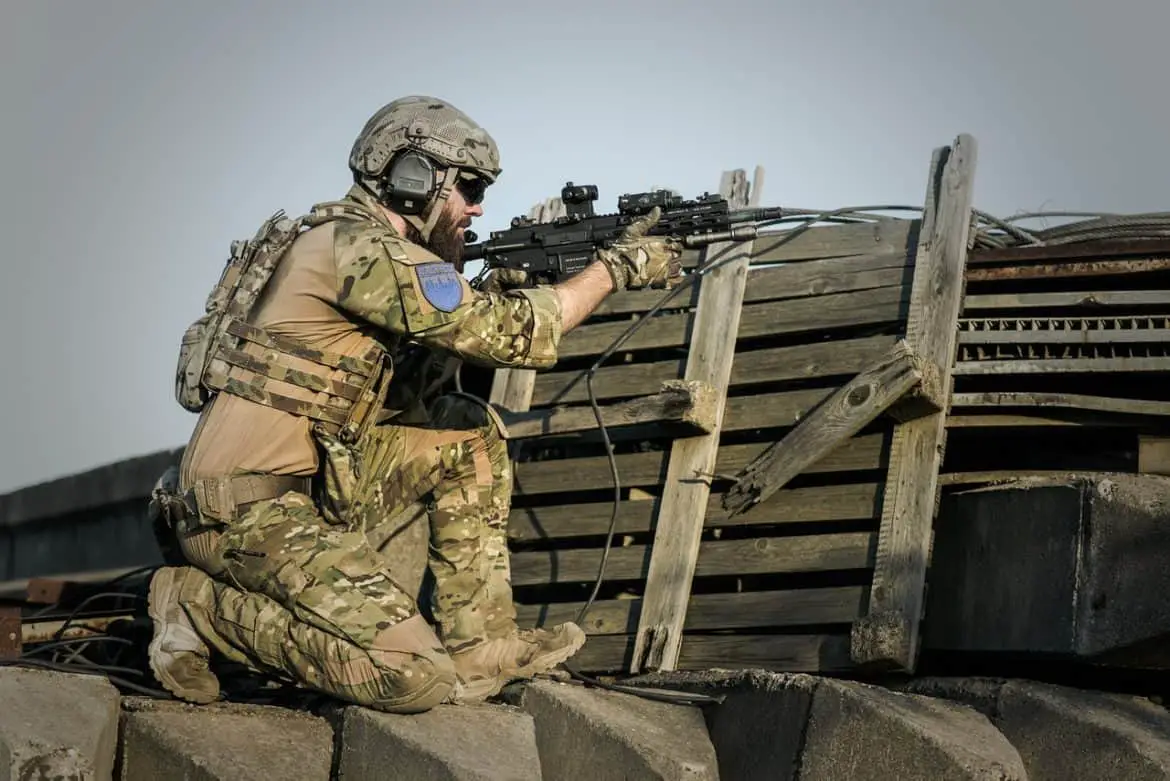
Firing from behind a barricade is an essential part of combat marksmanship. It is a relatively straightforward skill and easily acquired. As all shooting techniques, however, mastery only comes from extensive practice. Contrary to what is seen on movies, most shooting incidents do not happen at high noon on Main Street.
Common sense dictates that when being shot at, the reasonable person will try to find cover from incoming rounds. If withdrawal from the scene is not practical and returning fire is justified, then knowledge of barricade position firing is essential. The most important part of the barricaded position is being behind the barricade. While this seems a simpleminded thing to say, it is amazing how many times while coaching this technique, one sees shooters positioned beside the cover they should be behind. As this is a combat skill, it is important to become as small a target as possible.
A good strategy is to adopt a kneeling position behind the item of cover. Kneeling is a good position because it allows quick adoption from standing and is quick to get up from. As a general rule, the closer your center of balance is to the ground, the more inherently accurate a position is. Therefore the kneeling position is a two-fold better position than standing for return fire, not only for making yourself a smaller target but also for making your shots more likely to hit your aggressor.
The adaptations from a normal two handed shooting position are simple. The shooter does not use the off hand to give support to the weapon by muscle tension as he would in a traditional manner. Instead the off hand is pressed against the covering object. A much-used method to accomplish this is to make a fist with the thumb extended, in a “thumbs up” sign. Press the pad of the thumb and the last knuckle of the support hand into the barricade. Cradle the firing hand and weapon in the support hand. Make sure that no part of the firearm is touching anything other than your flesh. Contact by the weapon with solid objects causes the weapon to bounce and the round to go off target.
The only portions of your body that should be exposed beyond the barricade are your firing hand, and only the amount of your face that is needed to obtain a clear view of the sights, target, and situation. Your arm should be raised enough so that the weapon is brought up to your face, not your face lowered to your sights. It takes practice to enable you to be able to quickly judge the distance needed between your body and cover to allow you to quickly assume the This article is based on the strategies for using a pistol behind a barricade, but long guns can also use this tactic with superficial modifications. Instead of using the knuckles of the support hand against the wall the hand should be extended as if making a “stop” sign. Extend the thumb away from the hand. Press your hand against the cover with your index finger flush against the barricade edge. Your thumb should extend past the cover like a shelf. Rest the forearm of the firearm on this shelf. All other aspects are similar.
It cannot be stressed how important this technique is in a lethal force situation. It is equally important that this technique is practiced so as to allow a seamless transition into this position.

